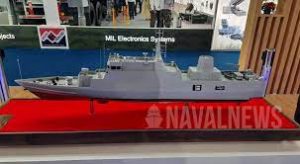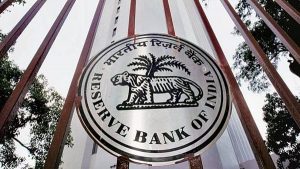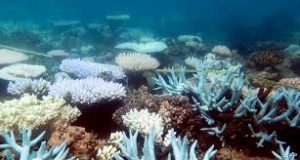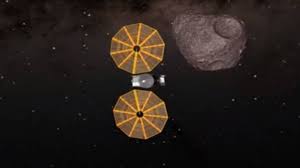Today’s Current Affairs: 4th Nov 2023 for UPSC IAS exams, State PSC exams, SSC CGL, State SSC, RRB, Railways, Banking Exam & IBPS, etc
Table of Contents
Anthrobots:

Researchers have developed miniature robots using human cells and termed them as anthrobots.
- Anthrobots are constructed from human tracheal cells which are bio-robots that possess self-assembly capabilities.
- These are capable of both movement and healing neurons within a laboratory setting.
- They can spontaneously fuse together to form a larger structure called a superbot, which was able to encourage the growth of neurons.
- They are measuring between the width of a human hair and the tip of a sharpened pencil.
- The anthrobots displayed diversity in structure and behavior. Some took on a spherical shape fully covered in cilia, while others resembled a football shape irregularly adorned with cilia.
- These anthrobots are different from Xenobots, which are created from embryonic stem cells of frog.
- They hold promise for regenerative medicine, wound healing, and disease treatment.
Leadership Group For Industry Transition (LeadIT) 2.0:

India and Sweden launched Leadership Group for Industry Transition (LeadIT) 2.0 during the COP28 World Climate Action Summit, hosted in Dubai.
- The LeadIT initiative, initially centered around pivotal sectors such as iron, steel, cement, and aluminum, focused on industry transition and knowledge sharing.
- LeadIT has played a pivotal role in accelerating the adoption of low-carbon technologies, aligning with global environmental goals.
Three core areas of LeadIT 2.0:
- Inclusive and Just Industry Transition: Ensuring that industry transitions are not only efficient but also equitable, promoting fairness and inclusivity in the process.
- Low Carbon Technology Development and Transfer: Placing renewed emphasis on the development and seamless transfer of low-carbon technologies, crucial for achieving sustainable practices across industries.
- Emerging Economy Technology Transfer: Facilitating the expedited transfer of innovative solutions to emerging economies, assisting in their transition to more sustainable practices.
- It serves as a platform for public-private collaboration, fostering sector-specific and cross-sectoral learning, especially concerning innovation opportunities and new technologies.
Chess Grandmaster Title: Brother-Sister Duo In History

Vaishali Rameshbabu and her younger brother Rameshbabu Praggnanandhaa have become the first-ever Grandmaster brother-sister duo in history.
- Chess Grandmaster title is the highest title or ranking that a chess player can achieve.
- The Grandmaster title and other chess titles is awarded by the International Chess Federation, FIDE (acronym for its French name Fédération Internationale des Échecs),
- The title is the badge of the game’s super-elite, recognition of the greatest chess talent on the planet, which has been tested and proven against a peer group of other similarly talented players in the world’s toughest competitions.
- Besides Grandmaster, the Qualification Commission of FIDE recognises and awards seven other titles: International Master (IM), FIDE Master (FM), Candidate Master (CM), Woman Grandmaster (WGM), Woman International Master (WIM), Woman FIDE Master (WFM), and Woman Candidate Master (WCM) are also be given.
- All the titles, including that of Grandmaster, are valid for life, unless a player is stripped of the title for a proven offence such as cheating.
Voice Over 5G:

Reports indicate Reliance Jio, India’s largest mobile carrier, has been testing Voice over New Radio (VoNR) behind the scenes.
- Voice over 5G is also known as Voice over New Radio (VoNR).
- This standard allows voice calls over 5G networks instead of the current standard that uses 4G.
- Vo5G takes all the improvements of 5G – speed, capacity, responsiveness – and applies them squarely to voice.
- It aims to have all that infrastructure and interoperability ready well in advance.
- To use Vo5G, you need three things: a phone that supports Vo5G, a carrier that offers Vo5G, and a 5G signal in your area.
- VoNR brings clear advances over VoLTE with 5G’s substantially higher bandwidth and lower latency compared to 4G LTE.
- It utilizes more advanced audio codecs that provide superior clarity and fidelity based on 5G’s increased data capacity.
- It promises faster call connection times, ensuring a seamless and prompt user experience.
- Vo5G aims to eliminate the notorious call drop issues, particularly during transitions between 5G and 4G.
- Lower packet loss contributes to better reliability, minimising the occurrence of voice cutouts during calls.
International Maritime Organisation:

India was re-elected to the International Maritime Organisation (IMO) Council with the highest tally at elections held at its Assembly in London for the 2024-25 biennium.
- International Maritime Organisation is a specialized agency of the United Nations which is responsible for measures to improve the safety and security of international shipping and to prevent pollution from ships.
- It is the global standard-setting authority for the safety, security and environmental performance of international shipping.
- Its main role is to create a regulatory framework for the shipping industry that is fair and effective, universally adopted and universally implemented.
- It was established as the Inter-Governmental Maritime Consultative Organization (IMCO) in 1948, became a specialized agency of the United Nations in 1959 and was renamed International Maritime Organization in 1982.
- It is the highest Governing Body of the IMO. It consists of all Member States, and it meets once every two years in regular sessions.
- The Assembly is responsible for approving the work program, voting the budget and electing the Council.
- It is the Executive Organ of the IMO and is responsible, under the Assembly, for supervising the work of the Organization.
- Funding for the organization comes from contributions by Member States, as well as voluntary donations and commercial activities.
- It currently has 175 Member States.
- Headquarters: London.
Dopamine : New Study

A new study shows that dopamine release in the human brain plays a crucial role in encoding both reward and punishment prediction errors.
- Dopamine is a neurotransmitter.
- It is a chemical messenger that helps in the transmission of signals in the brain and other vital areas.
- It is found in humans as well as animals, including both vertebrates and invertebrates.
- It plays a role as a “reward center” and in many body functions, including memory, movement, motivation, mood, attention, and more.
- Dopamine is released when your brain is expecting a reward. When you come to associate a certain activity with pleasure, mere anticipation may be enough to raise dopamine levels.
- Dysfunction of the dopamine system has been implicated in different nervous system diseases.
- High or low dopamine levels are associated with diseases including Parkinson’s disease, restless legs syndrome, and attention deficit hyperactivity disorder (ADHD).
- Neurons in the region at the base of the brain produce dopamine in a two-step process.
- First, the amino acid tyrosine is converted into another amino acid, called L-dopa.
- Then L-dopa undergoes another change as enzymes turn it into dopamine.
- In other parts of the body, dopamine acts as a type of hormone called catecholamine. Catecholamines are made in the adrenal glands- small hormone production factories that sit on top of the kidneys.
- There are three main catecholamines: Dopamine, Epinephrine (adrenaline), and Norepinephrine.
- These hormones get released into the bloodstream when the body is physically or mentally stressed.
- They cause biochemical changes that activate the so-called fight-or-flight response.
- That’s the body’s natural reaction to real or perceived stress.
Aarogya Maitri Aid Cube: World’s First Portable Hospital

The world’s first portable hospital, ‘Aarogya Maitri Aid Cube’, was unveiled recently in Gurugram.
- Aarogya Maitri Aid Cube is the world’s first portable hospital.
- Designed indigenously under Project BHISHM (Bharat Health Initiative for Sahyog Hita and Maitri), the modular trauma management and aid system is made up of 72 detachable mini-cubes, each being a specialized station for emergency response and humanitarian efforts.
- It contains medical equipment and supplies such as a mini-ICU, an operation theatre, cooking station, food, water, a power generator, blood test equipment, an X-ray machine, and more.
- The cubes are capable of handling patients with severe injuries up to 25 major burns, long limb fractures, chest injuries, spinal injuries and approximately 10 head injuries.
- It can treat as many as 200 patients.
- These cubes are light and portable, and can be rapidly deployed anywhere, from airdrops to ground transportation.
Iyothee Thass Pandithar:

The Tamil Nadu government installed a statue of Dalit rights and anti-caste activist Iyothee Thass Pandithar at Gandhi Mandapam in Chennai.
- Iyothee Thass Pandithar was born on 20 May 1845 in Madras presidency.
- He was a prominent anti-caste activist and a practitioner of Siddha medicine.
- In the 1870s, Iyothee Thass organised the Todas and other tribes of the Nilgiri Hills into a formidable force for the freedom movement.
- In 1876, Thass established the Advaidananda Sabha and launched a magazine called Dravida Pandian in collaboration with Rev. John Rathina.
- He established the “Dravida Mahajana Sabha ” in 1891 along with Rettamalai Srinivasan.
- He established the Sakya Buddhist Society in Madras, with branches all over South India.
- The Sakya Buddhist Society, also known as the Indian Buddhist Association, was established in 1898.
- To manage and coordinate the functioning of society, he began a weekly magazine, Tamizhan, in 1907
Codex Alimentarius Commission : Global Standards For Millets

The Codex Alimentarius Commission (CAC) praised India’s Standards on Millets and accepted its proposal for the development of global standards for millets during its 46th session held in Rome, Italy.
- India has framed a comprehensive group standard for 15 types of millets specifying 8 quality parameters, which received resounding applause at the international meet.
- India put forward a proposal for the development of global standards for millets, particularly for Finger millet, Barnyard millet, Kodo millet, Proso millet and Little millet as group standards as in the case of pulses.
- Codex Alimentarius Commission:
- It is an international food safety and quality standard-setting body.
- It was created by the World Health Organisation and Food and Agriculture Organisation of the United Nations in May 1963.
- Objective is protecting consumer’s health and ensuring fair practices in food trade.
- It consists of 189 member countries.
- Membership of the Commission is open to all Member Nations and Associate Members of FAO and WHO which are interested in international food standards.
- The Commission meets in regular sessions once a year, alternating between Geneva and Rome.
- The programme of work of the Commission is funded through the regular budgets of WHO and FAO, with all work subject to the approval of the two governing bodies of the parent organisations.
- The Commission works in the six official languages of the UN.
- Currently, it has standards for sorghum and pearl millet.
Peace Agreement With United National Liberation Front (UNLF):

The Government of India and Government of Manipur signed a Peace Agreement with United National Liberation Front (UNLF) , which is oldest valley-based insurgent group of Manipur.
- United National Liberation Front (UNLF) was formed in 1964, and is distinct from the insurgent groups active in the state’s Naga-dominated and Kuki-Zomi dominated hills.
- The UNLF is one of the seven “Meitei Extremist Organisations” banned by the Union government under the Unlawful Activities Prevention Act, 1967.
- The UNLF has been operating both within and outside Indian Territory.
- It is believed that the UNLF initially received training from the NSCN (IM), the largest insurgent group among the Naga factions.
- It operates in all the valley areas of Manipur and some villages in the Kuki-Zomi hill districts.
- It is a banned group It mostly operates from camps and training bases in Myanmar’s Sagaing Region, Chin State, and Rakhine State, with support from the Myanmar military.
- The agreement is anticipated to bring about a significant boost in ushering in a new era of peace, particularly in Manipur and the North East region.
- This marks the first instance where a Manipuri armed group from the valley has chosen to abandon violence, returning to mainstream society while committing to respect the Constitution of India and abide by the country’s laws.
- The agreement will not only bring an end to hostilities between UNLF and security forces which have claimed precious lives on both sides over the last more than half a century but also provide an opportunity to address the longstanding concerns of the community.
- The return of the UNLF to the mainstream will also encourage other valley-based armed groups to participate in the peace process.
- A Peace Monitoring Committee (PMC) will be constituted to oversee enforcement of the agreed ground rules.
40th Coast Guard Commanders Conference:

The Union Defence Minister inaugurated the 40th Coast Guard Commanders’ Conference.
- The conference agenda covers vital topics such as improving maritime safety and security, including search and rescue, pollution response, combating contraband and drug trafficking, ensuring the safety of fishermen and seafarers at sea, optimizing coastal security, promoting inter-agency coordination, and enhancing Maritime Domain Awareness.
- ICG was established in 1978 by the Coast Guard Act, 1978 as an independent Armed force of India.
- As the fourth largest Coast Guard in the world, it has played a significant role in securing the Indian coasts and enforcing regulations in the maritime zones of India.
MAHASAGAR : Indian Navy’s Outreach Initiative

The Indian Navy’s outreach initiative, MAHASAGAR, conducted its maiden edition as a virtual interaction between the Indian Chief of the Naval Staff, and heads of navies and maritime agencies from the Indian Ocean Region (IOR) littorals.
- Participating nations included several members of IORA such as Bangladesh, Comoros, Kenya, Madagascar, Maldives, Mauritius, Mozambique, Seychelles, Sri Lanka, and Tanzania.
- They emphasized the importance of harmonizing capacities in the IOR, aligning with India’s vision of SAGAR.
- India’s SAGAR (announced in 2015), which stands for ‘Security and Growth for All in the Region,’ is a vision and policy framework designed to enhance maritime cooperation and security in the Indian Ocean Region (IOR).
- The initiative emphasizes the importance of promoting collective security and sustainable development for the benefit of all nations in the region.
ASW Shallow Water Craft (CSL) Project:

The first three ships of the ASW Shallow Water Craft (CSL) project for the Indian Navy, named Mahe, Malvan, and Mangrol, were simultaneously launched on November 30, 2023, at Cochin Shipyard Limited (CSL), Kochi.
- Mahe class ships are part of the 08 x ASW Shallow Water Craft project and are equipped with indigenously developed underwater sensors for anti-submarine and maritime operations.
- The project aims for ‘Aatmanirbhar Bharat’ with over 80% indigenous content.
- The first ship is expected to be delivered in 2024.
- Aim is to undertake anti-submarine operations in coastal waters, Low-Intensity Maritime Operations (LIMO) and Mine Laying Operations.
Payment Aggregator Cross Border:

The Reserve Bank of India (RBI) has brought under its direct regulation all entities facilitating cross-border payments for import and export of goods and services and termed them Payment Aggregator-Cross Border (PA-CB).
- Payment Aggregator-Cross Border (PA-CB) facilitates cross-border online payments for the import and export of permissible goods and services.
- The RBI has set a minimum net worth requirement of Rs 15 crore for these entities, which will be categorised as PA-CB.
- They will be accountable for ensuring that they do not facilitate payment transactions for the import of any restricted or prohibited goods and services.
- If the amount involved exceeds Rs 2.5 lakh, the PA-CB must carry out due diligence on the buyer as well.
Payment Aggregator (PA):
- A PA (also known as a merchant aggregator) is a third-party service provider that allows merchants to accept payments from customers by integrating it into their websites or apps.
- It facilitates different types of payment transactions, including cash and cheques, online payments through multiple payment sources, or offline touchpoints.
- It allows merchants to accept bank transfers without setting up a bank-based merchant account. It means a merchant need not have a merchant account directly with the bank.
- A PA in India is incorporated under the Companies Act 2013.
- A PA can be a bank or a non-bank entity.
- Since a PA handles funds, it requires a license from the RBI.
- Only non-bank payment aggregators require unique authorization from the RBI, as ‘handling funds’ is considered a part of the normal banking relationships for bank PAs.
Galapagos Islands : Found Two New Coral Reefs

Scientists recently found two new coral reefs and two unexplored seamounts in the Galapagos Islands.
- Galapagos Islands is situated in the Pacific Ocean, roughly 600 miles off the coast of Ecuador.
- The Archipelago is a group of 19 islands, 13 large and 6 small, and dozens of islets and rocks that cover an area of over 17,000 square miles.
- It is distributed on either side of the Equator with an underwater wildlife spectacle with abundant life.
- Repeated volcanic eruptions helped to form the rugged mountain landscape of the Galápagos Islands.
- In comparison with most oceanic archipelagos, the Galapagos are very young, with the largest and youngest islands, Isabela and Fernandina, with less than one million years of existence, and the oldest islands, Española and San Cristóbal, somewhere between three to five million years.
- Mount Azul, at 5,541 feet, is the highest point of the Galapagos Islands.
- It is characterized by low rainfall, low humidity, and relatively low air and water temperatures.
- It was designated as a UNESCO World Heritage site in 1978.
Lucy Mission : Successfully Completed Its First Flyby Of An Asteroid

NASA’s Lucy spacecraft successfully completed its first flyby of an asteroid named Dinkinesh.
- Lucy Mission is a first-of-its-kind mission of NASA that will explore Jupiter’s elusive Trojan asteroids.
- Trojan Asteroids occupy a stable Lagrangian point in a planet’s orbit around the Sun.
- They are some of the oldest remnants from the formation of our solar system5 billion years ago.
- It was successfully launched on October 16, 2021, from the Kennedy Space Centrein Florida, US.
- Over its 12-year mission, Lucy will explore a record-breaking number of asteroids: it will fly by two in the belt of asteroids that circle the Sun between the orbits of Mars and Jupiter, and then 10 Trojans, which includes five asteroid targets and the satellites of three of those.
- Lucy will also fly by Earth three times to get a push from its gravity, making it the first spacecraft to return to the vicinity of Earth from the outer solar system.
- The spacecraft carries two infrared spectrometers and four cameras.
Annual Survey Of India’s City-Systems 2023:

The Annual Survey of India’s City-Systems (ASICS) 2023, published by the Janaagraha Centre for Citizenship and Democracy, a non-profit institution, highlights the challenges and constraints faced by the Local Governments in Indian Cities.
Highlights of the ASICS Report:
- Eastern states, comprising Bihar, Chhattisgarh, Jharkhand, Odisha and West Bengal, have relatively better urban legislations followed by southern states.
- Urban legislations are not available in the public domain in accessible formats. Only 49% of states/UTs have put out municipal legislations on websites of respective state urban departments.
- At least 39% of India’s capital cities lack an active master plan.
- A majority of Local Governments in Indian cities are financially dependent on their respective state governments, limiting their financial autonomy.
- Local governments in Indian cities have limited control over key financial matters, including taxation, borrowing, and budget approval, with the need for state government approval in most cases.
- Only Assam empowers its city governments to collect all key taxes. Except five States — Bihar, Jharkhand, Odisha, Meghalaya, and Rajasthan — all the others have to get approval from the State before borrowing money.
- There are disparities in the level of influence and control over finances across different city categories, including megacities (>4 million (mn) population), large cities (1-4 mn), medium cities (0.5 mn-1 mn), small cities (<0.5 mn).
- Mayors in megacities are not directly elected and do not have a five-year tenure, whereas mayors in smaller cities are directly elected but have limited authority over city finances.
- Indian cities face challenges in financial transparency, with a lack of quarterly financial audited statements and limited dissemination of annual audited financial statements. This issue is more pronounced in larger cities.
- Only 28% of the cities disseminate their annual audited financial statements. The number goes down further to 17% if only the mega cities are considered.
- While bigger cities do publish their city budgets, smaller cities lag there with just 40%-65% of them publishing that information.
- 35% of posts in India’s municipal corporations are vacant. The vacancy progressively worsens with 41% posts being vacant among municipalities and 58% being vacant in town panchayats.
- A comparison with global metropolises such as New York, London, and Johannesburg shows significant differences in the number of city staff per one lakh population and the administrative powers granted to these cities.
Pavana River : Thick Layer Of Toxic Foam Seen

Citizens and environmental activists have expressed concern over the thick layer of toxic foam seen on the Pavana River recently
- Pavana River is situated in the west of Maharashtra state, in the Pune District.
- The river is a notable river that crosses Pune City and divides Pune City and the Pimpri-Chinchwad area.
- It originates from the Western Ghats, about 6 km south of Lonavala.
- It is a tributary of the Bhima Riverand merges with the Mula River in Pune city.
- Flowing eastward initially, it becomes southbound and passes through the suburbs of Dehu, Chinchwad, Pimpri, and Dapodi before its confluence with the Mula River.
- A dam is built on this river at Pavana Nagar, called the “Pavana Nagar Dam”.
76th Session Of WHO Regional Committee For South-East Asia:

Investment in Primary Health Care (PHC) as the most inclusive, equitable and cost-effective way to achieve Universal Health Coverage was emphasized during the Ministerial Roundtable Conference at the 76th session of WHO Regional Committee for South-East Asia in New Delhi.
Highlights:
- Delhi Declaration on strengthening primary health care as a key element towards achieving universal health coverage was signed at the meeting.
- Reaffirming the vision of the Government of India of “Antyodaya”, it was stated that India’s strong health system relies on a “whole of government” and “whole of society” approach with the goal of improving essential health services and health systems to pre-pandemic levels.
- Importance of Ayushman Bharat Health and Wellness Centres (AB-HWCs) was emphasized which are transforming the delivery of comprehensive primary health care services.
- Saima Wazed (from Bangladesh) was elected as the Regional Director of the World Health Organization’s South-East Asia region during the 76th session of the WHO Regional Committee for Southeast Asia.
- The Regional Committee for South-East Asia is WHO’s governing body in the Region.
Bletchley Declaration : For AI Safety

Bletchley Park, the historic site known for its crucial role in World War II, is hosting the world’s first global summit on artificial intelligence (AI) safety in 2023.
- Britain, along with 28 other countries and the European Union, published the “Bletchley Declaration” at Bletchley Park, England.
- Bletchley Declaration aims to enhance global collaboration on artificial intelligence (AI) safety.
- It has a two-fold focus: identifying shared AI-related risks and enhancing scientific understanding of these risks, as well as creating cross-country policies to address them.




